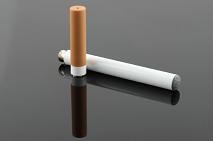Advertisment
E-cigarette vapour and MRSA

In laboratory studies, e-cigarette vapours appeared to increase the aggressiveness of dangerous bacteria such as methicillin-resistant Staphylococcus aureus (MRSA).
MRSA resistance to neutrophil killing was doubled with vapour from low nicotine content e-cigarettes (P<0.05) or tripled (P<0.05) when exposed to high nicotine level e-cigarette vapour, said Laura Crotty Alexander, MD, of the University of California San Diego and the Veterans Affairs San Diego Healthcare System.
She presented the research at the annual meeting of the American Thoracic Society.
“Regular cigarette smoke we all hate because it causes so many bad things and we were really hopeful that e-cigarettes would be a safer alternative,” said researcher Crotty Alexander. “However it is very hard to advise our patients in this era where we don’t know the effects of e-cigarette smoking,” she said.
She said that, while her work was done in the laboratory setting, other researchers are examining possible connections to human illness. Since MRSA generally colonizes in the nasopharynx, inhaled vapours would likely affect the bacteria.
What she did find in her experiments was that “the virulence of MRSA is increased by e-cigarette exposure.” Crotty Alexander explained that e-cigarette vapours induce MRSA to produce acids as a defence mechanism within the first 3 hours of exposure, similar to the organisms’ mechanism for defending against nitric oxide — one of the components of innate immune responses to infection.
“Moreover, e-cigarette vapour exposure up-regulates MRSA biofilm formation, consistent with boosting virulence,” she reported in her poster presentation. “In cellular killing assays, e-cigarette vapour-MRSA are able to avoid killing by both macrophages and neutrophils. This is due to e-cigarette vapour induced changes in surface charge, acid secretion, and biofilm formation.”
To conduct the e-cigarette vapour experiments, the researchers grew MRSA in culture with vapour concentrations similar to inhalers on the market. They tested first for biochemical changes in the culture known to promote pathogen virulence and then introduced epithelial cell- and alveolar macrophage-killing assays.
Crotty Alexander suggested that one possible contribution to the increased virulence of MRSA was the rapid change in pH induced by e-cigarette vapour. Exposure changed the pH from 7.4 up to 8.4, making the environment very alkalotic for both bacterial and mammalian cells. This alkalosis stresses the cells, giving them a danger signal, leading to activation of defence mechanisms. The bacteria make their surface more positively charged, to avoid binding by the lethal antimicrobial peptides produced by human innate immune cells. The bacteria also form thicker biofilms, increasing their stickiness and making MRSA less vulnerable to chemical and cellular attack.
These changes make MRSA more virulent. However, when MRSA is exposed to regular cigarette smoke, their virulence is even greater. Cigarette smoke induces surface charge changes 10-fold greater than that of e-cigarette exposure, she said.
“So from our laboratory finding showing that its effects on bacteria aren’t as severe as those caused by regular cigarette smoke, e-cigarette vapour still is not benign, and it is making these bacteria more aggressive,” she said.
She said that, to her knowledge, her group is the first to study the relationship between e-cigarette vapours and microbial virulence.
“As healthcare professionals, we are always being asked by patients, ‘Would this be better for me?'” Crotty Alexander said. “In the case of smoking e-cigarettes, I hated not having an answer. Our research shows that e-cigarettes are probably not safe to use. They might not be as bad as regular cigarette smoke, but nothing we are reporting supports the safe use of them.”
Other investigators are studying effects of e-cigarette vapours on mechanisms that could lead to cancerous changes in airway cells.
Disclosure: Crotty Alexander had no relevant relationships with industry.





